Day 2: VACEOs 2015 Retreat Highlights
2015 VACEOs RETREAT DAY TWO HIGHLIGHTS
Keynote Speaker: Cameron Herold, “Zero to Good”
Cameron Herold may be best known as a driving force behind 1-800-GOT-JUNK?’s spectacular growth from $2 million to $106 million in revenue in just six years. During our time together, he was very candid with us, and we liked that! (See First Day Highlights.) The audience was engaged and presented him with lots of thoughtful questions, including, “How do I find the right people?”, “How do you budget for a culture-perfect space?” and, “I’m not a people person, so how do I rally the troops?”
How to Build a Culture of Success:
1) Start with a VIVID vision. Write down your three-to-five-year goal. Key: Be able to express your vision in vivid detail. Hire a writer to create a statement that describes things like what your customers will be saying about you, what operations will look like, what the energy of the company is, etc. Once it’s crafted, keep repeating it over and over (and soon you’ll find others joining your “dance”).
2) Transition out people who don’t share your vision. Your goal is to attract and hunt for only the best. Hire for attitude, skill and core values. Raise the bar on your next hire.
3) Train every employee on how to run a meeting. A culture based on respect and effective communication skills is key. Hint: Each meeting should have a purpose, three goals and an agenda.
4) Provide an attractive office space for your employees. Ask yourself, “Is my personal office space sending the right message?”
5) Understand communication is a two-way street. Review how you’re speaking to the outside world. Does it attract or repel the right people? For example, how are your job descriptions written? Or the copy on your website? It may be time to shake it up a bit. Also, are you really listening to your employees? Do you really know what their dreams and aspirations are? If you genuinely connect with them, you’ll gain their loyalty.
>> YOUR ASSIGNMENT>>
A. Start with Step #1 from above!
 Doug Tatum, “No Man’s Land / Your Company’s Worth and Why”
Doug Tatum, “No Man’s Land / Your Company’s Worth and Why”
Doug Tatum is a repeat Retreat presenter and a recognized expert on the capital markets and the entrepreneurial growth economy; in fact, a number of VACEOs members have cited Doug’s ideas as the catalyst for change and growth in their companies.
We appreciated the fact that he was quick to say it’s completely legal, ethical and appropriate to stay small, but we were there to think BIG – to make our way through No Man’s Land.
Systems that Need to Be in Place to Meet the Growth:
1) Market. Determine exactly what you’re good at. Is it a personal or company trait? (If it’s personal and it can be transferred to your business, then you can scale; if not, stay small.)
2) Management Culture. Your inner circle will change if you trek through No Man’s Land, and so will your ability to give one-off customer experience.
3) Model. Know the size of your industry and how your business compares. Is there room for you if you scale?
4) Money. Capital is king, and you’ll need easy access to lots of it for expensive, top-notch employees, infrastructure changes, etc., to navigate your way through No Man’s Land. (Good news: Tatum suggests there is a trend toward investors backing add-on acquisitions.)
<< YOUR ASSIGNMENT>>
A. Ask yourself: Does it make sense for me to remain a small giant, or should I try to scale?
Want more? Revisit Day 1 Highlights.
Let’s Not Forget What We’ve Learned
There’s really no other event like the VACEOs Annual Retreat, is there? This year, we were asked to open our minds, examine why we serve and acknowledge how we perceive our work. (As a job? A career? A calling?)
We were asked to have the courage to be candid and consider how difficult a trek through No Man’s Land would be. Our Learning Labs taught us things like why we should hire hunters instead of farmers, and how we can protect our financial assets from theft. We had the opportunity to learn the ins and outs of employment and cyber-security laws.
We expanded our viewpoints, made new contacts and laughed a lot – but let’s not forget what we learned!
We’ve taken the time to publish a few highlights and give you an assignment or two.
Links:
FBI and VA CEOs Partner Up Against Cyber Threats
Question: What is one of the fastest growing forms of crime in the world – and possibly the most lethal threat to your business?
Answer: A malicious cyber intruder determined to compromise your company’s computer system and all of the precious customer, employee and financial data it contains.
Pretty scary, right? So how, as owners of small or mid-size businesses, can we arm ourselves against those who are intent on destroying what we’ve worked so hard to build? That was the topic at the center of our most recent VACEOs Quarterly Luncheon, where the theme was “Protecting Your Business from Cyber Threats: A Practical Discussion.”
Adam Lee, Special Agent in Charge (SAC) of the FBI’s Richmond Division, joined a panel of our own experts: Clay Westbay of Synergy Technical; David Crisafi, Special Agent, Federal Bureau of Investigation; and Julie Gustavsson, COO of Keiter. The group provided us with an overview of the scope of cyber crime and steps we can take to prevent it.
The discussion was moderated by Doug Jones of The Fahrenheit Group, who underscored the importance of the topic. “Understanding how cyber crimes are committed and the risks your business could face if it’s compromised is an important topic of discussion for all businesses, no matter their size,” he said.
“There’s no doubt that cyber crime and system intrusions are here to stay,” Jones continued. “Our panel of experts had tangible experience and advice to share, which really resonated with the group of CEOs who attended the session. It was an eye-opening knowledge-sharing experience.”
Special Agent Lee said the problem of cyber crimes involving businesses is more prevalent than most people think. “The director of our division often says, ‘There are two types of companies: those who have had their computer systems hacked or compromised and those that don’t yet know they’ve been compromised.’”
Agent Lee and the panel asked those of us in attendance to think like hackers and made us wonder, “Am I properly managing my data that’s sitting on my servers?” “Do I have a culture of security?” “Do my employees understand the risks?”
Here’s a snapshot of what we learned and a few takeaways.
PARTNERING IN THE FIGHT
Adam Lee was a surfer, a lawyer and an FBI sniper before taking on the role of SAC of the Richmond Division of the FBI. His territory spans the entire state. All told, the Richmond Division provides federal national security and criminal investigative resources to 82 of Virginia’s 95 counties.
Recently, his division has become laser-focused on national security intrusions and crimes that affect commercial networks and computer systems. His mission is to identify and neutralize these threats utilizing an agency with a relatively small staff.
To succeed in his job, he must build partnerships between his agency and local businesses. Those partnerships begin by making educational presentations and asking businesses to stay on top of common threats – and to think like hackers.
Essential steps for protecting your business? Stay aware of current schemes. Educate your employees. Take proper internal security measures. And most importantly, have some kind of response plan in place in case your system is compromised. (Make sure your plan includes contacting the FBI’s Richmond Division.)
YOUR BIGGEST THREAT = YOUR EMPLOYEES
All of our experts agreed: Your employees are the biggest threat to your system’s safety. Careless sharing of confidential data and opening malicious links are some of the most common ways they can put your data in harm’s way.
So how do you implement a cyber-safe culture? Our panelists say you can start by taking the following steps:
1) Invest in cyber safety training.
2) Make sure your have a clear internet security and data sharing policy in place.
3) Personally demonstrate your commitment to this important issue by setting quarterly meetings to discuss the topic.
4) Be sure your employees understand what measures you will take should your system and/or their mobile device be compromised.
REDUNDANCY IS A GOOD THING
Our panel members also agreed that adding layers of security around your systems is essential. The more important the data, or the higher the risk to your business should it be compromised, the more security measures should be put in place around it. According to Clay Westbay of Synergy Technical, “It’s all about layers of protection and having the right layers in the right places.”
It’s also worth considering engaging a professional consultant to conduct a security audit of your business for peace of mind.
7 CYBER SECURITY TAKEAWAYS FROM OUR PANEL OF EXPERTS**
1) Understand where your biggest data risks and threats are.
2) Invest in redundancy.
3) Keep malware protection up to date.
4) Don’t get too secure in your environment. (One silver bullet does not a secure network make.)
5) Don’t forget to have physical security procedures in place, too. (How easy is it for someone to walk into your server room?)
6) Consider getting a formal audit.
7) If your business is compromised, know exactly how to get your data back and how long it will take.
** Source: “Protecting Your Business from Cyber Threats: A Practical Discussion”Panel Discussion, VACEOs Quarterly Luncheon; March 26, 2015.
Want to know more? Visit the Internet Crime Complaint Center’s website or the cyber page at FBI.gov to learn more about cyber crime and find out how to make your business more secure.
It’s Confidential. It’s Safe. It’s Good Stuff.
We admit it. We ask our membership for feedback often. Call us crazy, but we want to know. We want to know things like: How’s your business doing? (Quarterly Economic Survey). Did this topic resonate with you? (Quarterly Luncheon surveys). How would you rate this speaker? (Annual Retreat Q&A).
Recently we asked, What about your VACEOs Roundtable or Forum experience is most valuable and meaningful to you? Seems our members are all on the same page. Almost every response included phrases about confidentiality, knowledge sharing and making connections.
Here’s a snap shot of some of the unedited feedback we gathered. Contact us today if you’d like to see the full set of the 100+ responses.
Engaging the Millennial Generation
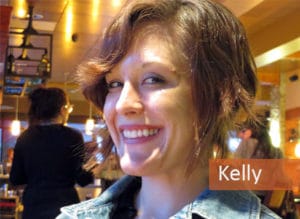 Meet Kelly. She’s a bright, energetic young professional. Does she look scary to you? Probably not, but some CEOs and business owners might find her intimidating. You see, she’s part of the Millennial generation – the most studied generation to date. And for good reason: There are so many of them! (80 million plus, according to U.S. Census Bureau stats)
Meet Kelly. She’s a bright, energetic young professional. Does she look scary to you? Probably not, but some CEOs and business owners might find her intimidating. You see, she’s part of the Millennial generation – the most studied generation to date. And for good reason: There are so many of them! (80 million plus, according to U.S. Census Bureau stats)
Millennials, according to the White House, are defined as Americans born between 1980 and the mid-2000s. In 2013, they represented one-third of the total U.S. population. Millennials’ numbers are significant, as well as the fact that they are the most diverse and educated generation to date.
This generation has been largely shaped by technology and has witnessed economic disruption at home and abroad. Studies show Millennials are masters of self-expression and are more caring, community oriented and politically engaged than previous generations. But they’re also known for being a challenge to manage, typically wanting to work WITH a boss, not FOR one. They can be full of contradictions, but isn’t that an innate trait of the young, no matter the generation?
Kelly admits she is motivated by money. It influenced her college major (economics) and determined which companies caught her eye during her job search after she graduated. “I was attracted to companies that were large and well known,” she explains. “I applied to entry-level positions that I felt I was qualified for. In general, I wanted to get my foot in the door with a company and later move into a role where I could hopefully use my degree one day.”
“I was looking for a place where I would stay for a long time, a place to start a career,” she continues. “I wanted an IRA package, too. I wanted to invest in my future. So for me it was about finding the right company that could give me financial security and opportunities for growth – a place to be long term.”
Kelly’s job search lasted about six months before she found an entry-level position with an international life insurance firm. She works with approximately 25 employees and says the office is made up primarily of a diverse group of fellow Millennials. Her boss is 25. Her boss’ boss? 31. She says that for now the company has what it takes to keep her happy.
“The people drew me in,” she says. “They are good to me. It’s like a family there. After only a few months, my responsibilities have grown. I’m now a hiring manager, and I feel I have a lot of ownership in what I do. I’m recruiting, interviewing and hiring employees, which I like most, and I’m doing some training and sales work, too.” She’s also excited about the financial rewards she anticipates in the near future, since much of her work is commission based.
Kelly’s motivations may or may not be the same as other Millennials’, and it would be unfair to make too many generalizations about this group as a generation of employees, but the fact is, if you’ve owned a business in the last five years, you’ve probably witnessed an increase in the number of Millennials in your workplace. How is your business adapting?
DIFFERENT, OR NOT?
Is the Millennial Generation really so different from Xers and Boomers?
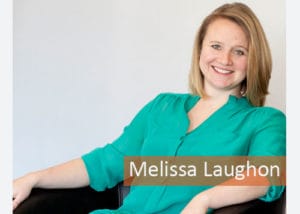 Melissa Laughon, managing partner of Catch Your Limit consulting firm, doesn’t think so. “There are differences between generations,” she says. However, I don’t feel that the key needs or desires of Millennials are that much different from Xers or Boomers.”
Melissa Laughon, managing partner of Catch Your Limit consulting firm, doesn’t think so. “There are differences between generations,” she says. However, I don’t feel that the key needs or desires of Millennials are that much different from Xers or Boomers.”
Laughon backs up her assertion with data. “My research finds that this generation desires an employer who: 1) invests and encourages development, 2) values their opinion, 3) creates opportunities for them to learn and grow, and 4) coaches real time. These are the same factors Gallup identified so many years ago as indicators for retention.”
In Laughon’s view, the difference between the generations is where they place accountability. She explains, “Millennials have put more accountability on leadership. The key difference compared to years prior is the control has shifted. Millennials will walk if they are not satisfied in their work or if it’s not a fit. Millennials are in the driver’s seat when it comes to workplace and culture.”
Brian Goulet, owner of The Goulet Pen Company, LLC, weighs in. “It’s clearly very popular to talk about Millennials in the workplace now, because they’re quite a bit different from previous generations,” he says. “I am one myself (I’m 30), and I always find it interesting when I hear about how hard ‘we’ are to manage. I actually don’t really feel that way at all. Probably the reason my company attracts so many Millennials is because we focus on building a lot of what they want: company culture, a strong sense of purpose, a team-oriented environment, and a progressive social media-savvy approach to educating and finding new customers.”
TAPPING INTO THE PASSION OF YOUTH
Sara Roberts and Michael Papay have advice for those who hire Millennials in their recent Fast Company article, “Stop Treating Millennial Employees Like Enigmas.” “If you want to see our engagement skyrocket, please try to go beyond checking the box after you push ‘send’ on that next annual survey. Instead, look to connect with us in a timely and transparent dialogue. Tap into our passion for truly authentic connection, and, together, let’s take our organization to new heights.”
 Brian Goulet agrees. “The most challenging aspect of Millennials in the work environment is that they (we) need to be plugged in,” he says. “We have grown up being very socially connected and have more access to information than any people from any society at any point in history since the creation of the world.”
Brian Goulet agrees. “The most challenging aspect of Millennials in the work environment is that they (we) need to be plugged in,” he says. “We have grown up being very socially connected and have more access to information than any people from any society at any point in history since the creation of the world.”
He adds, “They [his employees] need to understand how my company is helping people, impacting the world and helping them to achieve their greater career goals. When I can get them plugged in to that, amazing things happen. They light up, they bring creativity and excitement to the workplace, and they become incredibly loyal because they know I care about them holistically.”
COMMUNICATION + COLLABORATION = THE RIGHT CULTURE
Creating the right culture is key for future success with employees of all generations, according to Melissa Laughon. “A collaborative culture is imperative for the future,” she says. “In order for the culture to have a heartbeat, the process to create that culture must be collaborative. Once the values and behaviors are identified, then every person at every level must be held accountable to those values and behaviors.”
Laughon adds, “The culture must also embrace diversity at all levels, meaning, the culture should not be designed specifically for Millennials – the culture should be designed so that everyone’s ideas have value, and out of the diverse thinking comes greater ideas. This is the type of culture that people should aspire to.”
Kelly says her office meets once a week to go over company business and gather ideas for enhancing the culture. She’s been on the job for just four months, and she feels comfortable bringing new ideas to top management and feels like she is heard. Her work environment balances fun with professionalism, and she enjoys that mix.
Brian Goulet’s commitment to his company’s culture begins with the hiring process. “When hiring, we have a multi-step interview process that involves communication-style (DISC) profile testing, and we spend a great deal of time showing our culture and talking about our company’s values. Cultural fit is incredibly important, and is the number one factor for someone’s success in our company – more than education or previous work experience.”
Goulet Pen Company’s culture includes regularly scheduled strategic and check-in meetings. There is a defined company mission, purpose, vision and core values that are followed every day, and team-based incentives keep employees motivated.
Brian Goulet has grounded his business success in adapting his message to his audience. “I have to communicate things clearly and consistently and adapt my communication style to each individual,” he explains. “That’s a lot to ask of me as the CEO, and it’s taken a lot of very intentional focus for me to build a company culture and a management team that also supports my philosophy of leadership.”
IT’S ALL ABOUT LEADERSHIP
The Virginia Council of CEOs connects CEOs for learning and growth. So much of what our members work on in their roundtable groups comes down to leadership. We also present exclusive education events like next month’s CEO Retreat, where you can learn from practitioners like Brian Goulet and experts like Melissa Laughon. We hope to see you there!
Story sources:
: The Millennial Generation Research Review; uschamberfoundation.org
: 15 Economics Facts About Millennials; The Council of Economics, October 2014; whitehouse.gov
: Millennials Coming of Age; goldmansachs.com Stop Treating
: Millennial Employees Like Enigmas by Sara Roberts and Michael Papay; fastcompany.com

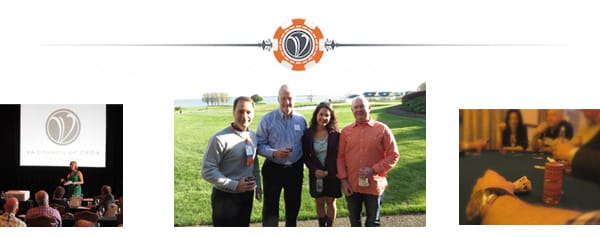
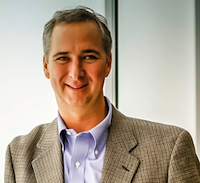

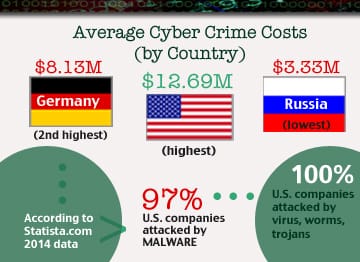
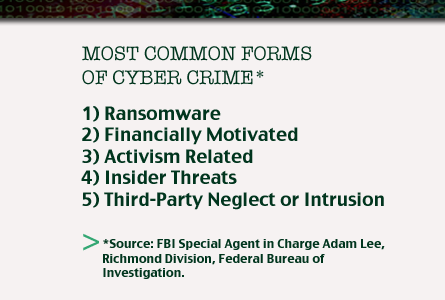
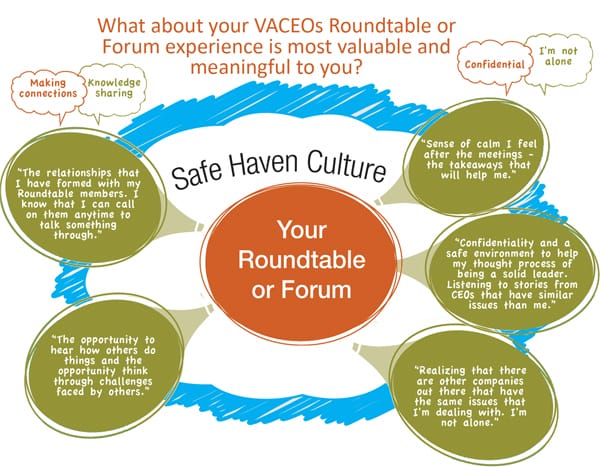
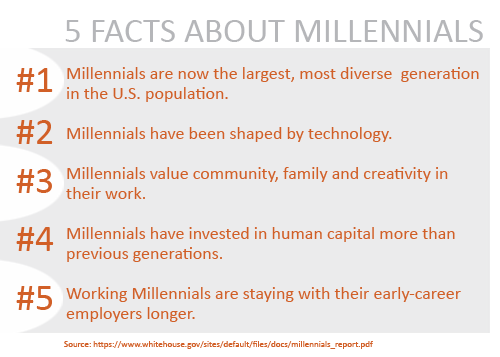
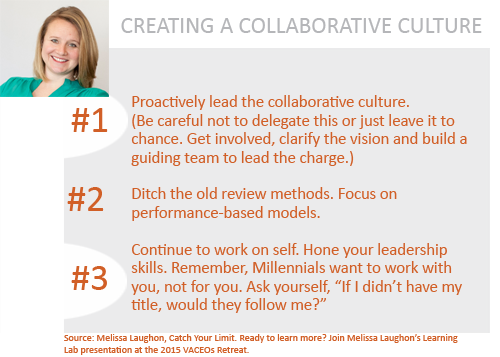
Recent Comments